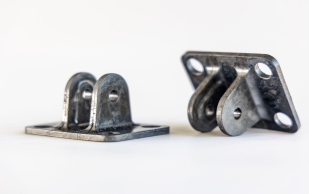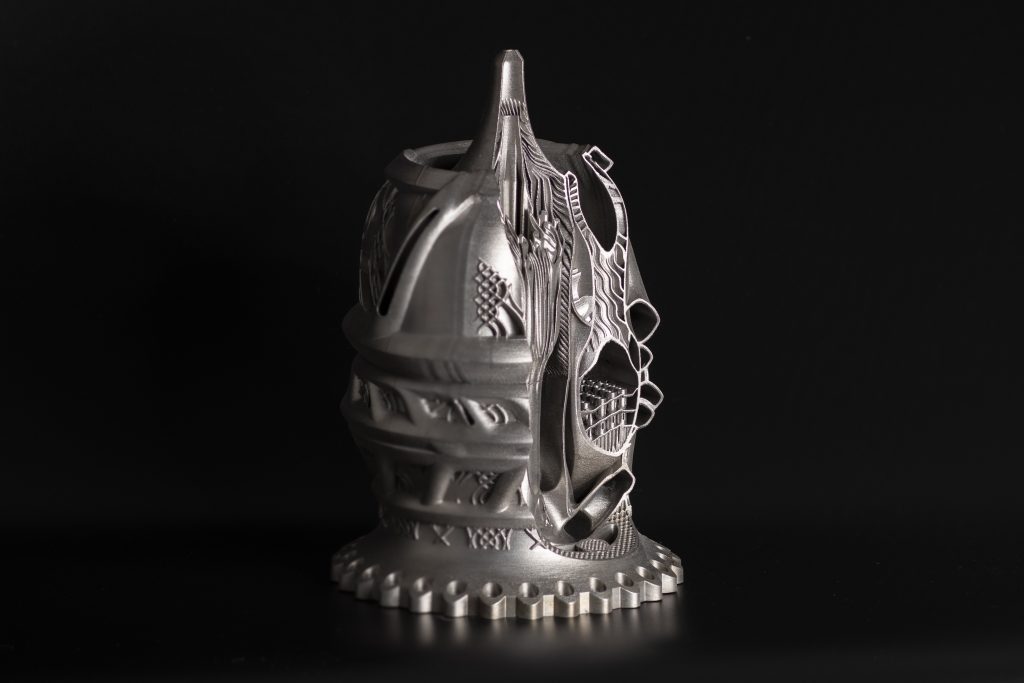The objective is to examine the potential of manufacturing structural aerospace composite applications by utilizing 9T Labs’ Additive Fusion Technology (AFT).
9T Labs AG, a Zurich-based 3D printer manufacturer, has announced a new partnership to investigate and test the potential of producing structural aerospace composite applications at scale with its Additive Fusion Technology (AFT). The innovative hybrid technology, which combines rapid bulk molding compound (BMC) overmolding with high-resolution additive manufacturing to automate manufacture, provides a cost-competitive alternative to the conventional production of aluminum aerospace parts. For 9T Labs, this relationship with Purdue University, one of the top engineering universities in West Lafayette, Indiana, is a first-of-its-kind venture.
“Traditional composite manufacturing is expensive, wasteful, and limited in its geometric freedom, particularly for small-sized applications,” said Yannick Willemin, head of marketing and business development at 9T Labs. “We are defining a new composite manufacturing standard that allows us to produce structural composite parts as easily as metal parts. Our new partnership with Purdue University is a meaningful step toward making this technology more broadly available and accessible within the next 12-18 months.”
“We’ve chosen to collaborate with 9T Labs because we believe that their development of AFT and their novel hybrid approach is the future of the composite manufacturing industry,” commented Dr. Pipes, professor of Engineering at Purdue University.

9T Labs’ Additive Fusion Technology
Proper fiber layup and excellent consolidation are crucial for producing a lightweight structural element. By first employing the Build Module to create a fiber layup, the Additive Fusion Technology (AFT) enables the automated fabrication of optimum part designs obtained from the Fibrify software.
Only when the Fusion Module applies heat and pressure to the prepared part to fuse it together the resulting preform part has the consolidation quality needed for a structural composite part. This exclusive two-stage technique guarantees part quality, reproducibility, and cost-effectiveness for production applications.
Users may quickly define fiber designs with the Fibrify Design Suite. By immediately exporting the composite parts to commercially accessible FEA simulation software for structural ability verification, users can fully optimize them. Users can also manage, operate, and monitor their equipment in real time with Fibrify Production.

Aerospace Applications via additive manufacturing
Aerospace is a demanding real-world application for any technology, yet additive manufacturing is rising to the challenge.
For example, Prominent 3D printer company EOS had teamed up with engineering design software expert Hyperganic to enhance the appearance and functionality of 3D printed aerospace components. As part of the cooperation, the businesses aim to combine the AI-based algorithmic engineering software Hyperganic Core with the laser powder bed fusion 3D printers from EOS. With the advent of the software, EOS customers can completely exclude the conventional part design procedure when designing their space propulsion components while utilizing algorithmic models. The change is anticipated to dramatically simplify the design workflow, enabling the computational generation of part geometries with enhanced performance in minutes.
Elsewhere, Stratasys, a producer of 3D printers, and Avio Aero, a GE Aviation business, announced initiatives that could result in deploying their respective technology in novel aerospace applications. With the publishing of the qualification data for the use of Antero 840CN03 polymer on the Orion spacecraft, Stratasys intends to encourage the creation of a model for applying the material in situations comparable to these. On the other hand, Airbus chose the Catalyst engine from Avio Aero to power its “Eurodrone,” an uncrewed aerial vehicle (UAV) intended to perform European surveillance missions.
Previously, the 3D Printing Industry team had interviewed experts from well-known 3D printing factories. Manufacturers, service providers, and engineering companies have invested in sites containing various 3D printing technology as industrial additive manufacturing develops. Facilities, such as the Jabil 3D printing center of excellence, have been built for end-to-end scaled production of medical equipment in the healthcare and dental industries. Emerging Technology Center in Athens, Alabama, and similar other facilities created recently in the U.S. are geared toward supporting sectors like aerospace, energy, and more through AM technologies. The Lawrence Livermore National Laboratory (LLNL) has also opened an Advanced Manufacturing Laboratory (AML) in California to accelerate research using additive manufacturing technology.
Nominations for the 3D Printing Industry Awards 2022 have now commenced. Nominate now, the form closes at the end of the month. Who do you think should make it to the shortlists for this year’s show?
To stay up to date with the latest 3D printing news, don’t forget to subscribe to the 3D Printing Industry newsletter or follow us on Twitter, or like our page on Facebook.
While you’re here, why not subscribe to our Youtube channel? Featuring discussion, debriefs, video shorts, and webinar replays.
Are you looking for a job in the additive manufacturing industry? Visit 3D Printing Jobs for a selection of roles in the industry.
Featured image shows a 3D printed composite overhead compartment pin bracket. Photo via 9T Labs.



